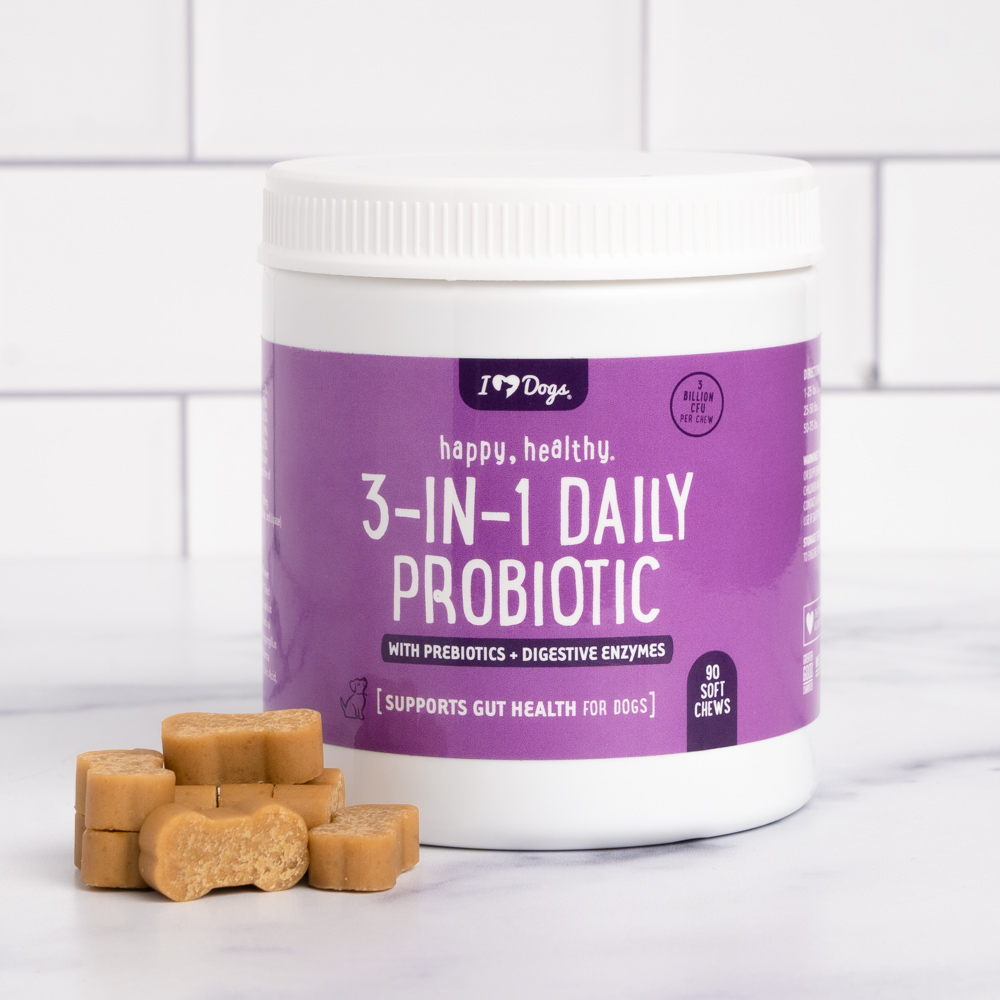Everyone who has a light-faced dog, especially those with a somewhat short nose (like a Maltese or Lhasa Apso) has probably dealt with tear staining. There have been products over the years to feed to the animal or apply to the face to combat tear staining, but many of these have been found to contain antibiotics. The FDA issued a warning to the manufacturers of these tear-stain products about the use of unapproved drugs. We don’t want our pets on antibiotics all the time at low doses because this encourages the growth of resistant strains and endangers everyone, pets and people both.

Lately, the search has been on for newer and safer product choices. Research is sparse, but anecdotal reports have shown some efficacy in new options.
Some say that the feeding of probiotics will help with tear staining. Probiotics are cultures of so-called “good bacteria” that can aid in digestion and contribute to overall better health. Because dogs have a different gastric environment than people, it is critical that a probiotic source be specific to the species, i.e. give only probiotics designed and tested for use in canines. 1
Probiotics have shown promise in many areas, including the management of skin disease, gastrointestinal disease, and allergic disorders. It appears that probiotics could also be of benefit for tear staining. Because they may produce other very positive health effects, they are probably worth a try. Buyer beware, however, one study tested diets that claimed to contain probiotics and none were found to contain the living bacteria that were stated on the labels. 2 Care must be taken when choosing these products. Depend on your veterinary team to guide you on the safest and most effective choices. They will have researched many options and have heard feedback from other pet owners like you.

For those that prefer a topical product, Lid N Lash® is a product available from veterinarians. The cleansing pads do not bleach the hair and contain no antibiotics. They will not remove the staining that has already built up but will help prevent build-up from forming on new hair growth. Because they are a topical product, you won’t have to worry about putting something into your dog and can make wiping with the pads a part of the daily hygiene program. They are easy to use and dogs do not seem to mind having their face and eyes wiped with the pads. They also seem to help with odor that can form because of the moisture on the face.
One more important thing, don’t forget to ask your veterinarian about the issue first. If your dog’s eyes water enough to produce tear stains, there could be a medical reason for the tearing, like a malfunctioning nasolacrimal duct that needs medical treatment. While you are at it, you can discuss his/her thoughts and recommendations on probiotic use.
For more information on caring for fur-iends, join the conversation on Facebook by clicking here.

- 2015 Aug;34:14-23. doi: 10.1016/j.anaerobe.2015.04.002. Epub 2015 Apr 8. Microbiota and probiotics in canine and feline welfare.Grześkowiak Ł, Endo A, Beasley S, Salminen S.
- Can Vet J.2003 Mar;44(3):212-6. Bacteriological evaluation of dog and cat diets that claim to contain probiotics. Weese JS, Arroyo L.
 Toledo, United States.
Toledo, United States.